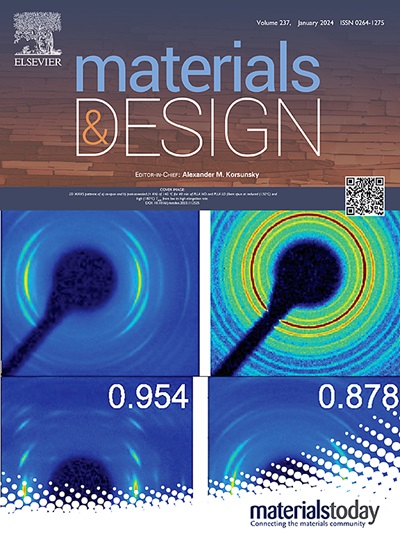Mechanisms and applications of wind turbine blade waste in cementitious composites: A review
IF 7.9
2区 材料科学
Q1 MATERIALS SCIENCE, MULTIDISCIPLINARY
引用次数: 0
Abstract
The cement and concrete industry play vital roles in global and local economies, and urgent measures are required to minimize carbon emissions. Utilizing end-of-life (EoL) wind turbine blades (WTB) in cementitious matrices —whether as fiber reinforcement, aggregate replacement, or binder material—represents an innovative solution to mitigate environmental impacts. This offers potential due to their rich calcium, silicon, and aluminum content in glass fiber-reinforced polymer (GFRP). The current review paper highlights the fundamental properties of WTBW (waste from wind turbine blades). Waste-cement reaction mechanisms and physical/mechanical properties of WTBW-incorporated cementitious materials are identified and discussed. Environmental implications and future research directions are also discussed. Findings suggest that fibers with epoxy resin from WTBW can increase water absorption by changing pore structure, hindering cement hydration and long-term strength. Epoxy resin may lower pH through hydroxyl ion consumption, delaying hydration, extending setting time, and reducing early strength. Meanwhile, the incorporation of WTBW in cementitious materials includes two main concepts- reinforcement (as fibers) or replacement (as powder, sand, or coarse aggregates). Low WTBW replacement levels (≤10 %) yield optimized mechanical performance, with decreasing performance at higher dosages. This work emphasizes the promise of WTBW in sustainable construction materials.

风力发电机叶片废弃物在胶凝复合材料中的作用机理及应用综述
水泥和混凝土行业在全球和地方经济中发挥着至关重要的作用,需要采取紧急措施将碳排放降至最低。在胶凝基质中使用报废(EoL)风力涡轮机叶片(WTB),无论是作为纤维增强、骨料替代还是粘合剂材料,都是一种减轻环境影响的创新解决方案。由于玻璃纤维增强聚合物(GFRP)中含有丰富的钙、硅和铝,因此具有很大的潜力。本文重点介绍了风力涡轮机叶片废弃物的基本特性。确定并讨论了废水泥浆掺入胶凝材料的废水泥浆反应机理和物理力学性能。并讨论了环境影响和未来的研究方向。研究结果表明,含环氧树脂纤维可通过改变孔隙结构增加水泥的吸水率,阻碍水泥水化和长期强度。环氧树脂可能通过消耗羟基离子、延迟水化、延长凝结时间和降低早期强度来降低pH值。同时,WTBW在胶凝材料中的掺入包括两个主要概念——增强(如纤维)或替代(如粉末、砂或粗集料)。低WTBW替换水平(≤10%)可获得最佳的机械性能,但高剂量会降低性能。这项工作强调了WTBW在可持续建筑材料中的前景。
本文章由计算机程序翻译,如有差异,请以英文原文为准。
求助全文
约1分钟内获得全文
求助全文
来源期刊

Materials & Design
Engineering-Mechanical Engineering
CiteScore
14.30
自引率
7.10%
发文量
1028
审稿时长
85 days
期刊介绍:
Materials and Design is a multi-disciplinary journal that publishes original research reports, review articles, and express communications. The journal focuses on studying the structure and properties of inorganic and organic materials, advancements in synthesis, processing, characterization, and testing, the design of materials and engineering systems, and their applications in technology. It aims to bring together various aspects of materials science, engineering, physics, and chemistry.
The journal explores themes ranging from materials to design and aims to reveal the connections between natural and artificial materials, as well as experiment and modeling. Manuscripts submitted to Materials and Design should contain elements of discovery and surprise, as they often contribute new insights into the architecture and function of matter.
 求助内容:
求助内容: 应助结果提醒方式:
应助结果提醒方式:


